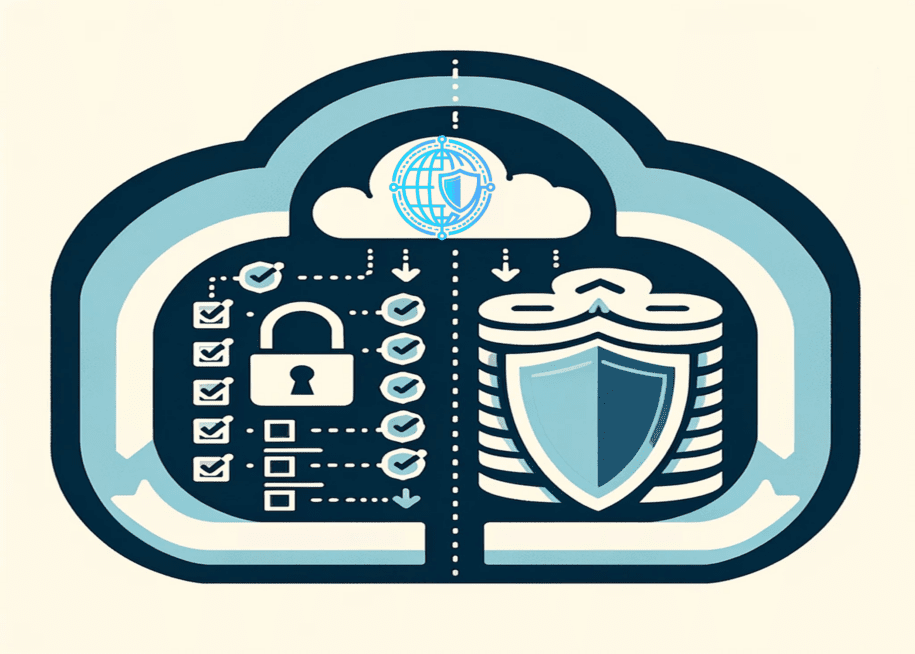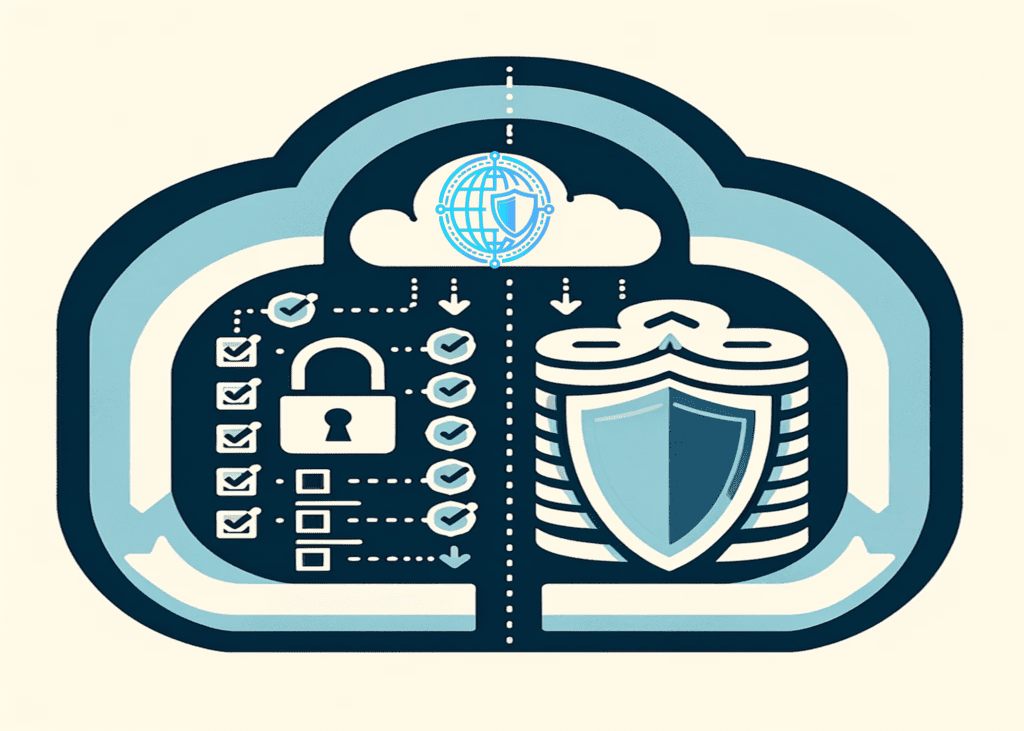In our previous post, “Cloud Forensics: Insights and Challenges,” we delved into the intricate landscape of cloud forensics, shedding light on the various challenges as outlined in NIST’s cloud forensic science standards. We discussed the complexities of investigating incidents in cloud environments, from data acquisition to ensuring the integrity and chain of custody of digital evidence, emphasizing the critical role of security controls throughout the process. This sparked a lively conversation among our readers, who expressed a keen interest in understanding how ISO/IEC 27001:2022 controls address these challenges and how these controls can be effectively mapped to NIST SP 800-53 for enhanced cloud security.
Your enthusiasm has led us to this follow-up article, where we will explore the integration of ISO/IEC 27001:2022 and NIST SP 800-53. These two frameworks are pillars in the realm of information security, each offering unique strengths. However, the dynamic and often complex nature of cloud environments demands a synergistic approach that leverages the best of both standards.
In this article, we will:
- Highlight the importance of both ISO/IEC 27001:2022 and NIST SP 800-53 in the context of cloud security.
- Discuss the differences and unique aspects of each framework.
- Explain when and why it is important to map these standards.
- Describe the process of mapping these standards, focusing on practical steps and best practices.
- Emphasize the importance of both standards in the ever-evolving field of cloud security.
- Provide guidance on how to adapt and map these controls specifically for cloud security environments.
The Importance of ISO/IEC 27001:2022
ISO/IEC 27001:2022 is an internationally recognized standard for information security management systems (ISMS). It provides a framework for establishing, implementing, maintaining, and continually improving an ISMS. The standard is designed to help organizations protect their information assets systematically and cost-effectively by adopting a risk management process.
Key highlights of ISO/IEC 27001:2022:
- Framework for ISMS: Offers a comprehensive approach to managing sensitive company information so that it remains secure.
- Risk Management: Emphasizes risk assessment and treatment, ensuring that the identified risks are managed appropriately.
- International Recognition: Being globally acknowledged, compliance with ISO/IEC 27001 can enhance an organization’s reputation and provide a competitive edge.
The Importance of NIST SP 800-53
NIST SP 800-53, developed by the National Institute of Standards and Technology (NIST), provides a catalog of security and privacy controls for federal information systems and organizations. It is primarily used by U.S. federal agencies but also serves as a benchmark for many private sector organizations.
Key highlights of NIST SP 800-53:
- Comprehensive Control Catalog: Offers a detailed set of controls that cover a wide array of security and privacy requirements.
- Customizable Control Baselines: Allows organizations to tailor controls to meet their specific needs based on their security requirements.
- Focus on Federal Compliance: Essential for U.S. federal agencies and contractors to ensure compliance with federal security mandates.
Key Differences Between ISO/IEC 27001:2022 and NIST SP 800-53
While both standards aim to enhance information security, they differ in scope, approach, and applicability:
Scope:
- ISO/IEC 27001:2022: Focuses on the overall management of an ISMS.
- NIST SP 800-53: Provides specific controls and guidelines for securing information systems.
Approach:
- ISO/IEC 27001:2022: Uses a top-down, risk management approach.
- NIST SP 800-53: Uses a control-based, bottom-up approach.
Applicability:
- ISO/IEC 27001:2022: Internationally applicable across all types of organizations.
- NIST SP 800-53: Primarily for U.S. federal information systems but also adopted by private sectors globally.
When to Map Both Standards
Mapping ISO/IEC 27001:2022 to NIST SP 800-53 is beneficial when organizations are subject to both international and federal regulations, or when they aim to leverage the strengths of both frameworks to create a robust security posture. This is particularly important for multinational corporations, federal contractors, and organizations in highly regulated industries.
How to Perform Mapping
Mapping involves aligning the controls and requirements of ISO/IEC 27001:2022 with those of NIST SP 800-53. Here’s a step-by-step guide:
- Identify Common Objectives: Understand the objectives of both standards to identify overlapping and complementary controls.
- Create a Mapping Matrix: Develop a matrix that lists ISO/IEC 27001:2022 clauses against corresponding NIST SP 800-53 controls.
- Analyze Gaps: Identify gaps where controls do not match and determine additional measures needed to bridge these gaps.
- Implement and Monitor: Apply the mapped controls and continuously monitor their effectiveness, ensuring compliance with both standards.
Importance of Both Standards in Cloud Security
In the cloud environment, the need for stringent security controls is paramount due to the shared responsibility model between cloud service providers and customers. Both ISO/IEC 27001:2022 and NIST SP 800-53 play crucial roles here:
- ISO/IEC 27001:2022: Helps establish a robust ISMS that includes cloud-specific risks and controls, ensuring continuous monitoring and improvement.
- NIST SP 800-53: Provides detailed controls for cloud security, including incident response, access control, and continuous monitoring.
Mapping ISO/IEC 27001:2022 and NIST SP 800-53 for Cloud Security
In today’s digital landscape, cloud security is a top priority for organizations worldwide. The dynamic nature of cloud environments introduces unique security challenges that require robust frameworks to manage risks effectively. Two of the most influential frameworks in this regard are ISO/IEC 27001:2022 and NIST SP 800-53. While each standard provides a solid foundation for information security, combining their strengths can significantly enhance an organization’s cloud security posture. This article delves into the process of mapping ISO/IEC 27001:2022 to NIST SP 800-53 specifically for cloud security, highlighting the benefits, steps, and best practices.
The Importance of Cloud Security
Cloud computing offers unparalleled flexibility, scalability, and cost-efficiency. However, it also introduces new vulnerabilities and risks. The shared responsibility model in cloud computing—where cloud service providers (CSPs) and customers share security responsibilities—necessitates a comprehensive approach to security. Ensuring the confidentiality, integrity, and availability of data in the cloud requires robust security controls and continuous monitoring.
Benefits of Mapping ISO/IEC 27001:2022 to NIST SP 800-53
Mapping ISO/IEC 27001:2022 to NIST SP 800-53 offers several advantages for organizations aiming to strengthen their cloud security:
- Comprehensive Coverage: Combining the strengths of both standards ensures that a wide range of security controls are covered, from management and operational aspects to technical controls.
- Enhanced Compliance: Many organizations must comply with both international and U.S. federal regulations. Mapping helps in meeting these diverse compliance requirements.
- Improved Risk Management: The risk management principles of ISO/IEC 27001, coupled with the detailed control catalog of NIST SP 800-53, provide a robust framework for identifying, assessing, and mitigating cloud security risks.
- Continuous Improvement: Both standards emphasize continuous monitoring and improvement, which is crucial for maintaining security in the ever-evolving cloud landscape.
Steps to Map ISO/IEC 27001:2022 to NIST SP 800-53 for Cloud Security
- Understand Cloud Security Requirements: Begin by understanding the specific security requirements of your cloud environment. This involves identifying the types of data processed, stored, and transmitted in the cloud, the associated risks, and the regulatory requirements that apply to your organization.
- Identify Overlapping Controls: Create a mapping matrix that aligns the controls of ISO/IEC 27001:2022 with those of NIST SP 800-53. For instance, ISO/IEC 27001:2022’s control on information security policies (A.5.1.1) can be mapped to NIST SP 800-53’s controls on security policies (PL-1, PL-2).
- Analyze Gaps and Redundancies: Identify gaps where controls in one standard do not have a direct equivalent in the other. Conversely, note any redundancies where both standards prescribe similar controls. For example, while ISO/IEC 27001 emphasizes risk assessment (A.8.2.1), NIST SP 800-53 offers a detailed approach to risk assessment (RA-3).
- Develop a Unified Control Set: Create a unified set of controls that incorporates the strengths of both standards. Ensure that all identified cloud-specific risks are addressed. This unified control set should be comprehensive, covering aspects such as access control, incident response, data protection, and continuous monitoring.
- Implement Cloud-Specific Policies and Procedures: Develop cloud-specific security policies and procedures that reflect the unified control set. These should include guidelines for securing cloud infrastructure, managing access, protecting data, and responding to incidents. Ensure that these policies are communicated to all relevant stakeholders and are integrated into the organization’s overall security strategy.
- Conduct Continuous Monitoring and Improvement: Implement continuous monitoring processes to ensure that the security controls remain effective over time. Use automated tools and techniques to monitor cloud environments for vulnerabilities and threats. Regularly review and update the security policies and controls to adapt to new risks and regulatory requirements.
Best Practices for Effective Mapping
- Engage Stakeholders: Involve key stakeholders from IT, security, compliance, and business units in the mapping process. Their input and buy-in are crucial for the successful implementation of the unified control set.
- Leverage Automation: Utilize automated tools for continuous monitoring and compliance checks. Tools like security information and event management (SIEM) systems and cloud security posture management (CSPM) solutions can streamline the process.
- Document Everything: Maintain thorough documentation of the mapping process, including the rationale for mapping decisions, identified gaps, and implemented controls. This documentation is vital for audits, assessments, and continuous improvement efforts.
- Regular Training and Awareness: Ensure that all employees, especially those involved in cloud operations, receive regular training on the updated security policies and procedures. This helps in maintaining a high level of security awareness and adherence to best practices.
- Perform Regular Audits: Conduct regular internal and external audits to assess the effectiveness of the mapped controls. Audits help in identifying areas for improvement and ensuring ongoing compliance with both standards.
Mapping ISO/IEC 27001:2022 to NIST SP 800-53 for cloud security is a strategic approach that leverages the strengths of both standards to create a robust security framework. This comprehensive approach not only enhances compliance but also significantly improves the organization’s ability to manage cloud security risks effectively. By following the outlined steps and best practices, organizations can ensure that their cloud environments remain secure, resilient, and compliant in the face of evolving threats and regulatory demands.
Both ISO/IEC 27001:2022 and NIST SP 800-53 are critical to achieving comprehensive information security. By understanding their differences and leveraging their strengths, organizations can create a robust security framework that meets international and federal requirements, especially in the dynamic cloud environment. Mapping these standards not only ensures compliance but also enhances overall security posture, enabling organizations to navigate the complex landscape of cybersecurity with confidence.
Guilda’s expertise in cybersecurity and digital transformation can help your organization seamlessly implement and align ISO/IEC 27001:2022 and NIST SP 800-53 standards, ensuring robust security controls for your cloud infrastructure. Contact us today to elevate your security posture and achieve compliance with confidence.


